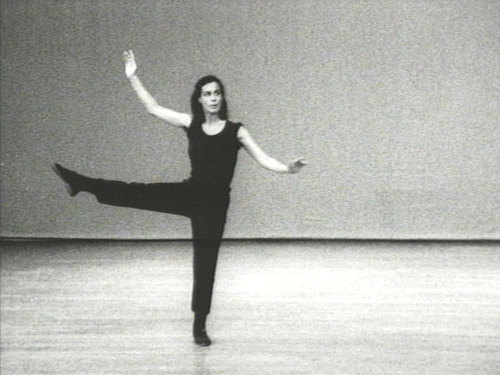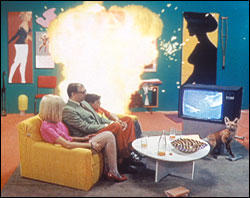From the March 1980 issue of American Film. – J.R.

It’s pretty apparent to anyone who meets avant-garde filmmaker Yvonne Rainer for the first time that she used to be a dancer. But one probably has to see at least one of her four challenging features in order to perceive that she used to be a choreographer, too. And it’s only after one considers her in both these capacities that one starts to get an inking of what her viewpoint and her art are all about.
The first time I met her — three and a half years ago, at the Edinburgh Film Festival — Rainer reminded me in several ways of writer and filmmaker Susan Sontag. It wasn’t merely the somewhat glamorous positions that both women occupy on respective intellectual turfs. There was also a kind of spiritual resemblance that seemed to run much deeper: voice tone, appearance, wit, grace, and coolness masking an old-country sense of tragedy and suffering.
***
In Edinburgh Rainer delivered a lecture called “A Likely Story,” about the use of narrative in films. In the course of her remarks, she made it clear that her own “involvement with narrative forms” hadn’t always been “either happy or wholehearted,” but was “rather more often a dalliance than a commitment.” Read more
A short review commissioned by Film Comment (July-August 2002), which left out the asterisk in the title. — J.R.

*Corpus Callosum


I recently read in a film festival report that Michael Snow’s new 92-minute feature was a bit longer than it needed to be. This conjured up visions of a test-marketing preview — cards handed out at Anthology Film Archives with questions like, “Would an ideal length for this be 82 minutes? An hour? Three minutes? 920 minutes?” For even though this may be the best Snow film since La Région Centrale in 1971 — a commemorative (and quite accessible) magnum opus with many echoes and aspects of his previous works — it enters a moviegoing climate distinctly different from the kind that greeted his earlier masterpieces. In 1969, the late, great Raymond Durgnat could find the same “mixture of despair and acquiescence” in both Frank Tashlin and Andy Warhol; today, on the other hand, avant-garde art is expected to perform like light entertainment.
Up to a point, Snow seems ready to oblige with his irrepressible jokiness —- a taste for rebus-style metaphors (often banal) and adolescent pranks (a giant penis hovering over a blonde’s backside) that makes this the least neurotic experimental film about technology imaginable — the precise opposite of Leslie Thornton’s feature-length cycle Peggy and Fred in Hell. Read more




